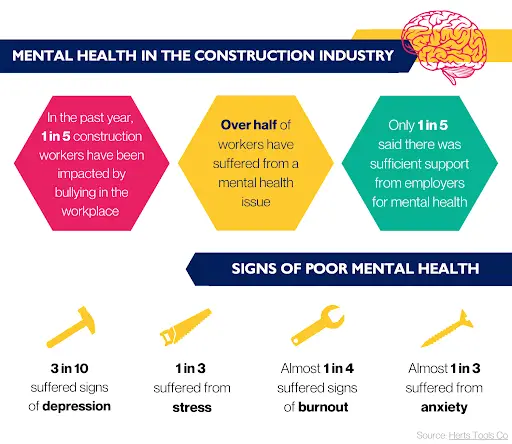In this article, you will gain a better understanding of anxiety symptoms. Whether it’s a racing heart, sweaty palms, or a persistent feeling of worry, anxiety symptoms can manifest in various ways, affecting both your mind and body. By delving into the different signs of anxiety, you’ll be better equipped to recognize and manage these symptoms for a calmer and more peaceful life.

Understanding Anxiety
Anxiety is a common condition that many people experience at some point in their lives. It is characterized by feelings of fear, worry, and unease. While it is normal to feel anxious in certain situations, anxiety becomes a disorder when these feelings become excessive and interfere with daily life. Understanding anxiety is crucial in order to identify the symptoms and seek appropriate treatment.
Definition of Anxiety
Anxiety can be defined as a state of apprehension or fear about future events or situations. It involves a combination of psychological and physical symptoms that can vary in intensity. While anxiety is a normal and adaptive response to stress, when it becomes chronic and overwhelming, it can significantly impact an individual’s daily functioning.
Types of Anxiety Disorders
There are several types of anxiety disorders, each with its own unique set of symptoms and triggers. Generalized Anxiety Disorder (GAD) is characterized by excessive and persistent worry about various aspects of life, such as work, health, or family. Panic Disorder involves recurrent and unexpected panic attacks, accompanied by intense fear or discomfort. Social Anxiety Disorder revolves around an intense fear of social situations and the fear of being judged by others. Other common anxiety disorders include specific phobias, obsessive-compulsive disorder (OCD), and post-traumatic stress disorder (PTSD).
Physical Symptoms of Anxiety
Anxiety can manifest itself in various physical symptoms, often impacting different bodily systems. It is important to recognize these physical symptoms as they can provide clues to the underlying anxiety disorder.
Rapid Heartbeat
One of the most common physical symptoms of anxiety is a rapid heartbeat. You may notice that your heart is beating faster than usual, even in non-stressful situations. This increased heart rate is a result of the body’s fight-or-flight response, which is triggered by the release of stress hormones.
Difficulty Breathing
Anxiety can also cause difficulty breathing, often leading to shortness of breath or a sensation of being unable to take a deep breath. This symptom can be alarming and may contribute to feelings of panic and further anxiety.
Excessive Sweating
Excessive sweating is another physical symptom that can accompany anxiety. You may notice that you sweat more than usual, even in cooler temperatures or when engaging in minimal physical activity. This excessive sweating is a result of the body’s effort to regulate its temperature in response to the heightened arousal caused by anxiety.
Gastrointestinal Issues
Anxiety can also affect the digestive system, leading to symptoms such as stomachaches, nausea, diarrhea, or constipation. These gastrointestinal issues are often a result of the body’s physiological response to stress and can further contribute to feelings of discomfort and unease.
Muscle Tension
Muscle tension is another physical symptom commonly associated with anxiety. You may notice that your muscles feel tight and achy, especially in the neck, shoulders, and back. This tension can be a result of increased muscle activity and can contribute to physical discomfort.
Cognitive Symptoms of Anxiety
Anxiety not only affects the body but also the mind. It can manifest itself through various cognitive symptoms that impact an individual’s thoughts and mental processes.
Trouble Concentrating
One cognitive symptom of anxiety is difficulty concentrating. You may find it challenging to focus on tasks, make decisions, or retain information. This can be particularly frustrating and can further contribute to feelings of stress and anxiety.
Constant Worry
Anxiety often involves persistent and intrusive worry about a wide range of concerns. You may find yourself constantly preoccupied with thoughts of potential dangers or negative outcomes. This chronic worry can be exhausting and can significantly impact one’s overall well-being.
Negative Thinking
Anxiety can also result in negative thinking patterns, leading to a pessimistic outlook on life. You may find yourself expecting the worst in every situation or dwelling on past mistakes. These negative thoughts can further fuel anxiety and make it difficult to maintain positive mental health.
Fear of Worst-Case Scenarios
Individuals with anxiety often have a heightened fear of worst-case scenarios. They may imagine catastrophic outcomes and overestimate the probability of negative events occurring. This fear can be paralyzing and can prevent individuals from engaging in activities or taking risks.
Irrational Fears
Anxiety can also manifest itself in the form of irrational fears or phobias. You may feel an intense and persistent fear of specific objects, situations, or animals that pose little or no actual threat. These irrational fears can significantly impact one’s daily life and may require specialized treatment.
Emotional Symptoms of Anxiety
Anxiety can have a profound impact on an individual’s emotional well-being. It can lead to a range of distressing emotions and feelings that can be difficult to manage.
Feelings of Dread
One of the emotional symptoms of anxiety is a sense of impending doom or a feeling of dread. You may experience a persistent sense of unease or fear without knowing the specific cause. This feeling can be overwhelming and can significantly impact your emotional state.
Irritability
Anxiety can also make you more irritable and quick to anger. You may find yourself snapping at others or becoming easily frustrated by minor inconveniences. This heightened irritability can strain relationships and contribute to feelings of guilt or shame.
Feeling Restless
Restlessness is another emotional symptom commonly associated with anxiety. You may feel a constant need to move or engage in activities to alleviate the inner tension and unease. This restlessness can be debilitating and can impact your ability to relax or engage in leisure activities.
Feeling Tense
Anxiety often leads to a feeling of constant tension or being on edge. You may find it difficult to relax and may notice increased muscle tension throughout your body. This physical tension can exacerbate the emotional symptoms of anxiety and make it difficult to find relief.
Constant Worry or Nervousness
Anxiety is characterized by persistent worry or nervousness that may persist even in the absence of an immediate threat. You may find it challenging to turn off the worry or to relax, leading to a constant state of nervousness that can impact your overall well-being.

Behavioral Symptoms of Anxiety
Anxiety can also have a significant impact on an individual’s behavior and daily functioning. These behavioral symptoms are often observable by others and can provide important clues to the presence of an anxiety disorder.
Avoidance Behaviors
One common behavioral symptom of anxiety is the tendency to engage in avoidance behaviors. You may find yourself avoiding situations, places, or activities that you perceive as anxiety-inducing. While this avoidance may provide temporary relief, it can perpetuate the cycle of anxiety and prevent you from confronting your fears.
Compulsive Rituals
Anxiety can also manifest itself through the presence of compulsive rituals or repetitive behaviors. These behaviors, known as rituals, are often performed in an effort to reduce anxiety or prevent the occurrence of feared outcomes. While these rituals may provide temporary relief, they can ultimately contribute to the maintenance of anxiety.
Panic Attacks
Panic attacks are another behavioral symptom commonly associated with anxiety. They involve the sudden onset of intense physical and psychological symptoms, such as a racing heart, shortness of breath, chest pain, trembling, and feelings of impending doom. Panic attacks can be extremely distressing and may lead to further avoidance behaviors to prevent their recurrence.
Trouble Sleeping
Sleep disturbances are often observed in individuals with anxiety. You may experience difficulty falling asleep, staying asleep, or having restful sleep. These sleep disturbances can further contribute to feelings of fatigue, irritability, and overall impaired functioning.
Effects of Long-Term Anxiety
If left untreated, anxiety can have long-term effects on both physical and mental health. It is important to seek appropriate treatment to prevent these potential consequences.
Chronic Health Issues
Long-term anxiety can contribute to the development of chronic health issues. The physiological responses associated with anxiety, such as elevated blood pressure and increased inflammation, can increase the risk of cardiovascular diseases, gastrointestinal problems, and immune system disorders.
Impaired Cognitive Function
Prolonged anxiety can also impair cognitive function. The constant worry and preoccupation associated with anxiety can make it difficult to concentrate, make decisions, or retain information. This can impact one’s academic or professional performance and overall quality of life.
Depression
Anxiety and depression often coexist and can exacerbate each other’s symptoms. Prolonged anxiety can lead to the development of depressive symptoms, such as persistent sadness, loss of interest in pleasurable activities, and changes in appetite or sleep patterns.
Relationship Difficulties
Anxiety can strain relationships and make it difficult to maintain healthy and fulfilling connections with others. The constant worry, irritability, and avoidance behaviors associated with anxiety can create tension and misunderstanding in relationships, leading to feelings of isolation or loneliness.
Substance Abuse
Long-term anxiety can also increase the risk of substance abuse. Some individuals may turn to drugs or alcohol as a way to self-medicate and alleviate anxiety symptoms. However, substance abuse can further worsen anxiety symptoms, creating a vicious cycle that is difficult to break.

Causes of Anxiety
Anxiety disorders can have various contributing factors. While the exact causes of anxiety are not fully understood, several factors have been identified as potential triggers.
Genetic Predisposition
There is evidence to suggest a genetic predisposition to anxiety disorders. Individuals with a family history of anxiety are more likely to develop an anxiety disorder themselves. However, having a genetic predisposition does not guarantee the development of an anxiety disorder, as environmental factors also play a significant role.
Environmental Factors
Environmental factors, such as traumatic life events, chronic stress, or a history of abuse, can contribute to the development of anxiety disorders. These factors can disrupt the brain’s natural stress response and contribute to an overactive fear response, leading to the development of anxiety symptoms.
Medical Conditions
Certain medical conditions, such as thyroid disorders, heart disease, or chronic pain, can increase the risk of developing anxiety symptoms. The underlying physiological changes associated with these conditions can impact the brain’s functioning and trigger anxiety.
History of Trauma or Abuse
Experiencing trauma or abuse during childhood or adulthood can significantly increase the risk of developing anxiety disorders. Traumatic experiences can alter the brain’s response to stress and increase vulnerability to anxiety symptoms later in life.
Stress
Stressful life events or ongoing stress can trigger anxiety symptoms. High levels of stress can overwhelm the body’s coping mechanisms and disrupt the balance of neurotransmitters in the brain, increasing the risk of anxiety.
Anxiety in Children and Adolescents
Anxiety is not limited to adults and can affect children and adolescents as well. Understanding how anxiety presents in these age groups is crucial to provide appropriate support and intervention.
Prevalence
Anxiety disorders are one of the most common mental health disorders in children and adolescents. It is estimated that around 25% of children and adolescents will experience an anxiety disorder before the age of 18.
Unique Symptoms
Anxiety symptoms in children and adolescents may manifest differently compared to adults. Younger children may express anxiety through physical complaints, clinginess, or fear of separation, while adolescents may exhibit symptoms similar to those observed in adults.
Impact on Development
Untreated anxiety in children and adolescents can impact their development and functioning. It can interfere with academic performance, social relationships, and overall well-being. Early intervention is crucial to mitigate the long-term effects and promote healthy development.
School and Social Effects
Anxiety can significantly impact a child’s school experience and social interactions. It can lead to school avoidance, academic difficulties, or difficulties forming and maintaining friendships. Recognizing these effects and providing appropriate support is essential to help children and adolescents with anxiety thrive.

Treatment Options for Anxiety
Fortunately, there are various treatment options available for individuals with anxiety disorders. Treatment approaches can be tailored to the individual’s specific needs and may involve a combination of therapeutic techniques, medication, lifestyle changes, and support.
Cognitive-Behavioral Therapy
Cognitive-Behavioral Therapy (CBT) is a widely used and effective treatment approach for anxiety disorders. It focuses on identifying and challenging irrational thoughts and beliefs that contribute to anxiety. CBT also incorporates behavioral techniques to encourage gradual exposure to anxiety-inducing situations and to develop coping strategies.
Medication
In some cases, medication may be prescribed to help manage anxiety symptoms. Antidepressants, such as selective serotonin reuptake inhibitors (SSRIs) or benzodiazepines, may be used to reduce anxiety and improve overall well-being. Medication should always be prescribed and monitored by a qualified healthcare professional.
Lifestyle Changes
Making certain lifestyle changes can also help manage anxiety symptoms. Regular exercise, maintaining a healthy diet, practicing relaxation techniques such as deep breathing or meditation, and getting enough sleep can all contribute to improved mental health.
Alternative Therapies
In addition to traditional therapies, alternative approaches such as acupuncture, yoga, or herbal remedies may be considered as complementary treatments for anxiety. It is important to consult with a healthcare professional before starting any alternative therapy to ensure safety and effectiveness.
Support Groups
Joining a support group can provide individuals with anxiety a safe space to share experiences, gain support, and learn from others. Peer support can be invaluable in managing anxiety and fostering a sense of belonging and understanding.
Importance of Early Diagnosis and Intervention
Early diagnosis and intervention are crucial in effectively managing anxiety disorders. Recognizing and addressing anxiety symptoms early on can have a significant impact on an individual’s well-being and overall quality of life.
Avoidance of Long-Term Effects
Early diagnosis and intervention can help prevent the development of chronic anxiety and the associated long-term effects. Timely treatment can provide individuals with the tools and strategies to manage anxiety and minimize its impact on daily functioning.
Improved Quality of Life
Effective treatment for anxiety can significantly improve an individual’s quality of life. It can reduce symptoms, enhance coping skills, and foster a sense of control over anxiety. This, in turn, can promote overall well-being and life satisfaction.
Prevention of Other Disorders
Untreated anxiety can increase the risk of developing other mental health disorders, such as depression or substance abuse. Early intervention can reduce this risk and prevent the progression of anxiety to more severe mental health issues.
Better Response to Treatment
Early diagnosis and intervention often lead to better treatment outcomes. The earlier anxiety is identified and addressed, the more responsive individuals tend to be to therapy and lifestyle changes. Early intervention sets the stage for long-term recovery and improved mental health.
Understanding anxiety and its various symptoms is a crucial step in seeking appropriate treatment and support. By recognizing the signs of anxiety and addressing them promptly, individuals can regain control over their lives and experience improved mental well-being. If you or someone you know is experiencing symptoms of anxiety, reach out to a qualified healthcare professional for guidance and support. Remember, you are not alone, and help is available.



